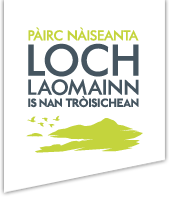
Re-introduction of water voles in the Trossachs
Over the past year we’ve seen the continued expansion of re-introduced water voles in the Trossachs, where historically the water vole population had been exterminated by non-native American mink.
How did the project come about?
- Surveys showed water voles had been lost from most of the National Park due to mink predation.
- Forest Enterprise Scotland had created ideal wetland habitats for water voles as part of a forest habitat network improvement programme in the Loch Ard Forest.
- The nearest surviving water vole colonies in the National Park were too far away from the Trossachs for natural recolonisation to occur.
- A population of captive water voles being removed from a large development site in North Lanarkshire needed to be restored to the wild
Success
1000 water voles from the captive population were released between 2008 and 2011 and successfully colonised 12 sites in the Loch Ard Forest. Since then, diligent control work has kept the area free of mink, allowing the water vole population to gradually increase and spread naturally. This has been monitored by surveys by a dedicated group of volunteers coordinated and led by a Project Officer and other staff from the project partners.
The 2016 survey showed that 40 new sites have been colonised since the original release and that water voles are now found as far as 10km away from the nearest release site. Around 120 volunteers have taken part in surveys covering more than 200km of waterway. In total, more than 25 land managers are now involved in the project.
Effective Partnership Work
This is a partnership project led by Forest Enterprise Scotland with the Forth Fisheries Trust, the National Park Authority, the Royal Zoological Society of Scotland, Scottish Natural Heritage and the Derek Gow Consultancy.
The National Park Authority contributed significantly to the survey effort, assisted with the water vole releases, co-ordinated volunteers and assisted with the mink monitoring. We also contributed to the steering group and helped to fund the Project Officer.

